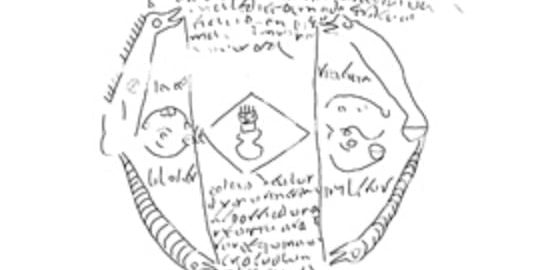One of the curiosities is the fact that in ancient Rome, black magic was very common and often practiced, and thus the casting of curses. There are traces of this fact dating back to the 5th century BCE to the 5th century CE.
With the help of a special ritual directed at the person who was hated, people tried to harm them, and even kill them. The motives were different and practically did not differ from what is happening in today’s world. The object of the curse was a rival in love or politics, an opponent in sports or trade, or simply someone who was hated for personal reasons.
On a lead sheet called defixiones – a sheet containing text with magical content – the ancient Romans wrote, or actually scraped or embossed with great accuracy a person’s name, surname, a frequently held function in society as well as all things that would happen to her, including her death. Often the letters were written upside down.
Sometimes it was accompanied by a drawing with various symbols as well as with specific parts of the body on which the curse was to act. It was always the tongue, hands, feet, brain, sometimes even hair, as well as the intelligence or soul of a given person. All this for the gods of the afterlife to have a clearly defined field of activity.
When the sheet was finished and everything carefully written, it was rolled up and blocked with a nail, which was long and wrapped the sheet around it so that it could not be opened. Often it was on this nail that the name of the addressee of the curse was scratched. The next step was to place such a sheet somewhere deep, because that was the place where the gods of the afterlife were believed to have lived. Most often, such sheets were buried in existing graves, thrown into wells or hot springs, and simply buried deep in the ground. Some of these coiled rolls have been found and have survived to this day, such as the one in the picture, found in Rome in 2009.
As the text on the sheet proves, the curse was directed at the referee of a sports competition and its action was to lose the referee’s sight. Along with this sheet, similar 21 and 14 sealed lead containers have been found which, in addition to inscriptions, contain anthropomorphic figurines made of organic material folded upside down. The sheets and figures tell us about such a tangible presence of black magic in the everyday life of the ancient Romans







